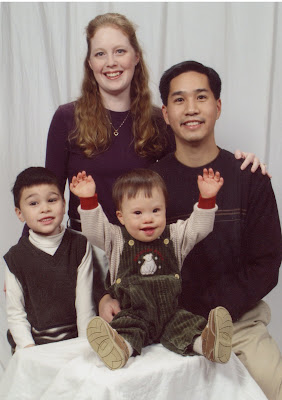The cover story of this week's issue of Newsweek is "See Baby Discriminate: Kids as young as 6 months judge others based on skin color. What's a parent to do?" The article highlights that kids are aware of racial differences far earlier than most parents think, and parents generally don't know how to talk about them. Some key points:
- While most parents think of themselves as multicultural and colorblind, their kids pick up on unspoken racial attitudes. When asked "Do your parents like black people?" 14 percent said, "No, my parents don't like black people" and 38 percent said "I don't know."
- Parents avoid talking about race because they don't know what to say and are worried about saying the wrong thing. Parents worry that calling attention to race, even with a positive statement ("It's wonderful that a black person can be president") still encourages a child to see divisions within society.
- In a 2007 study of 17,000 families with kindergartners, nonwhite parents are about three times more likely to discuss race than white parents; 75 percent of white parents never or almost never talk about race.
- Kids are developmentally prone to in-group favoritism. Four- and five-year-olds randomly given red and blue T-shirts didn't segregate by behavior, but when asked which color team was better or might win a race, they chose their own color. When Reds were asked how many Reds were nice, they'd answer, "All of us." Asked how many Blues were nice, they'd answer, "Some."
- Three-year-olds shown pictures of other kids were asked to choose whom they'd like to have as friends. 86 percent of white kids picked whites. At ages 5 and 6, the kids were asked to sort cards into two piles however they wanted. Only 16 percent sorted by gender; 68 percent sorted by race.
- Researchers have found that the more diverse the environment, the more kids self-segregate by race and ethnicity, and the likelihood that any two kids of different races have a friendship goes down.
- In junior high and high school, kids in diverse schools experience two completely contrasting situations: many students have a friend of another race, but more kids just like to hang with their own.
- The odds of a white high-schooler in America having a best friend of another race is only 8 percent. 85 percent of black kids' best friends are also black.
- Parents are generally very comfortable talking about gender stereotypes ("Mommies can be doctors just like daddies"), and this can be a model for how parents talk about race.
This article was quite insightful and thought-provoking, and it reminded me of times like when my older son mentioned classmate who was "dark," and I didn't know quite how to explain terminology like "black" or "African American." Because our kids are biracial, we have occasion to talk about ethnic identity and cultural distinctives. When at buffet restaurants with self-serve ice cream machines, we've used the analogy of the twist cone - there's vanilla, there's chocolate, and there's both. It's hard to tell how much they understand or care at this point, but we're working on it.
Subscribe to:
Post Comments (Atom)

1 comment:
I heard one of the scholars, Jo (last name?) interviewed on TV, and I thought he overemphasized the biological developmental part of kids perceiving race. If parents talk about race, or don't talk about race, kids learn race. Young children notice skin color just as they notice everything else, but they are taught its meaning.
That skin color is a 'marker' for a person's potential for being nice, bad, friendly, or whatever is learned. Kids don't 'automatically' make those attributions just because of their developmental stage.
I also think the conversation has a kind of default setting to "whites" and "nonwhites" -- that various 'nonwhite' races have negative attributions for white kids. The increasing numbers of biracial and multiracial people in the country should be an important variable - does binary racial thinking subsume even increasing multiracialism, or is multiracialism changing the conversation (if you take the time to listen to the conversations of the very young).
Post a Comment